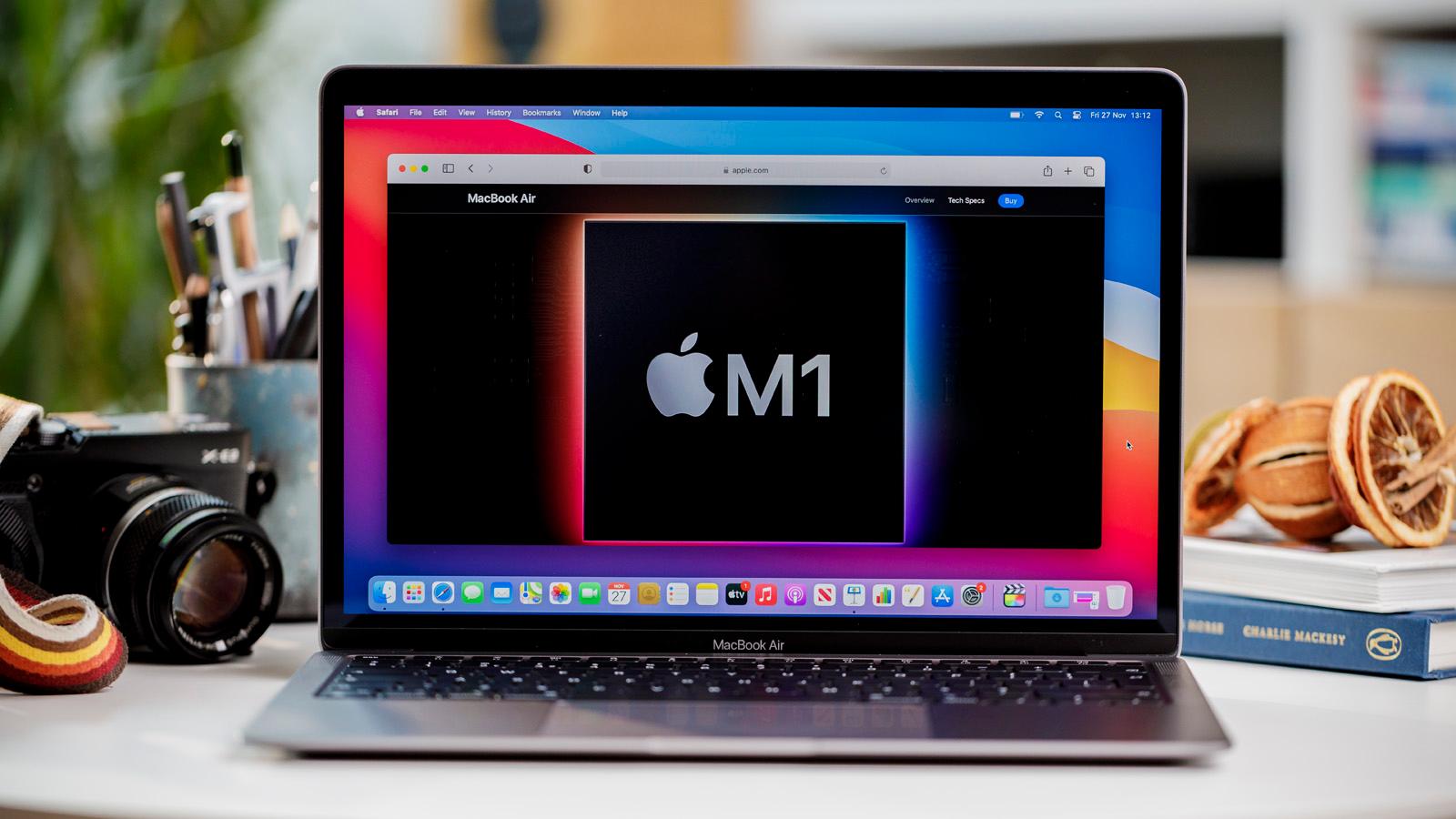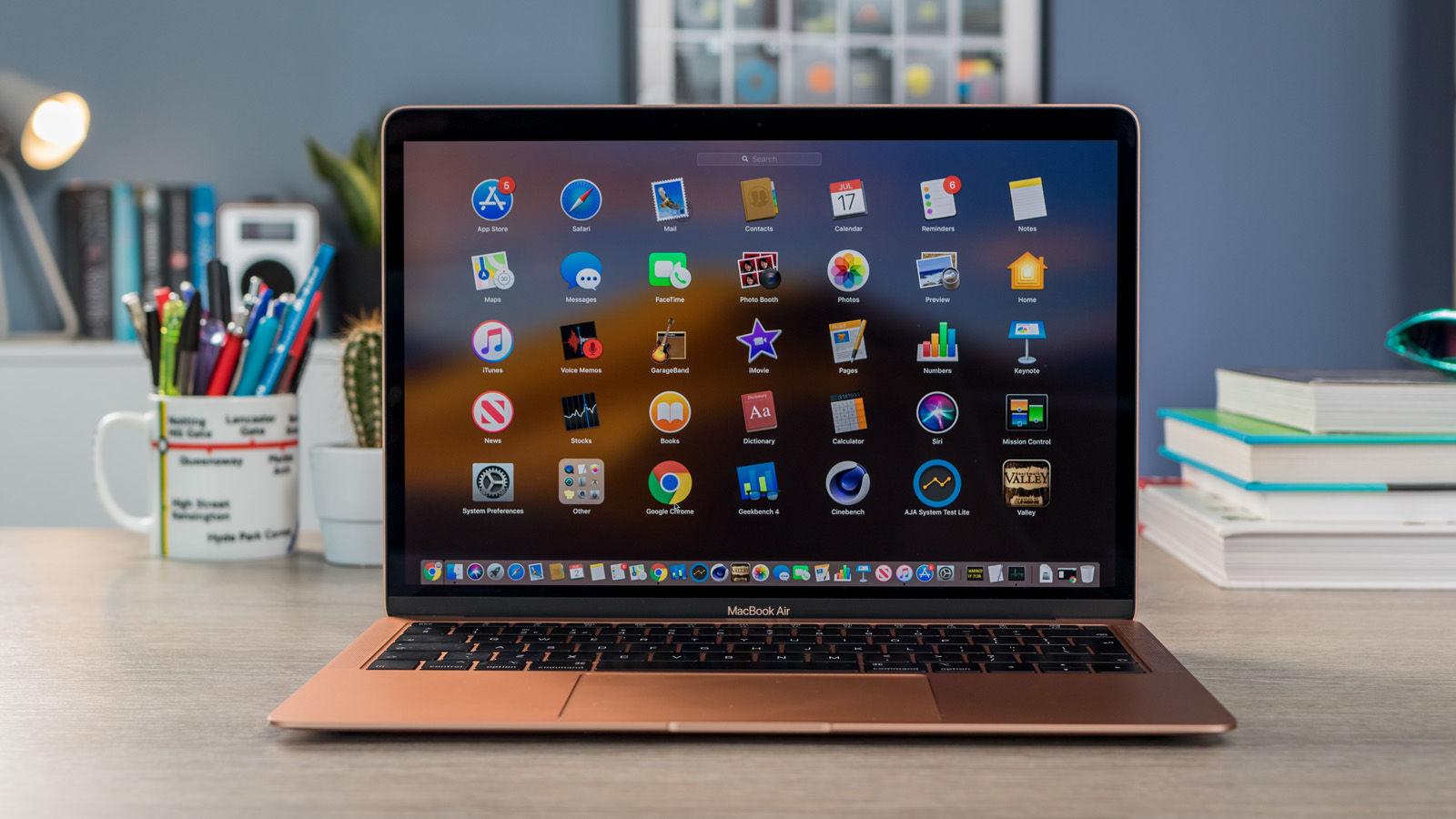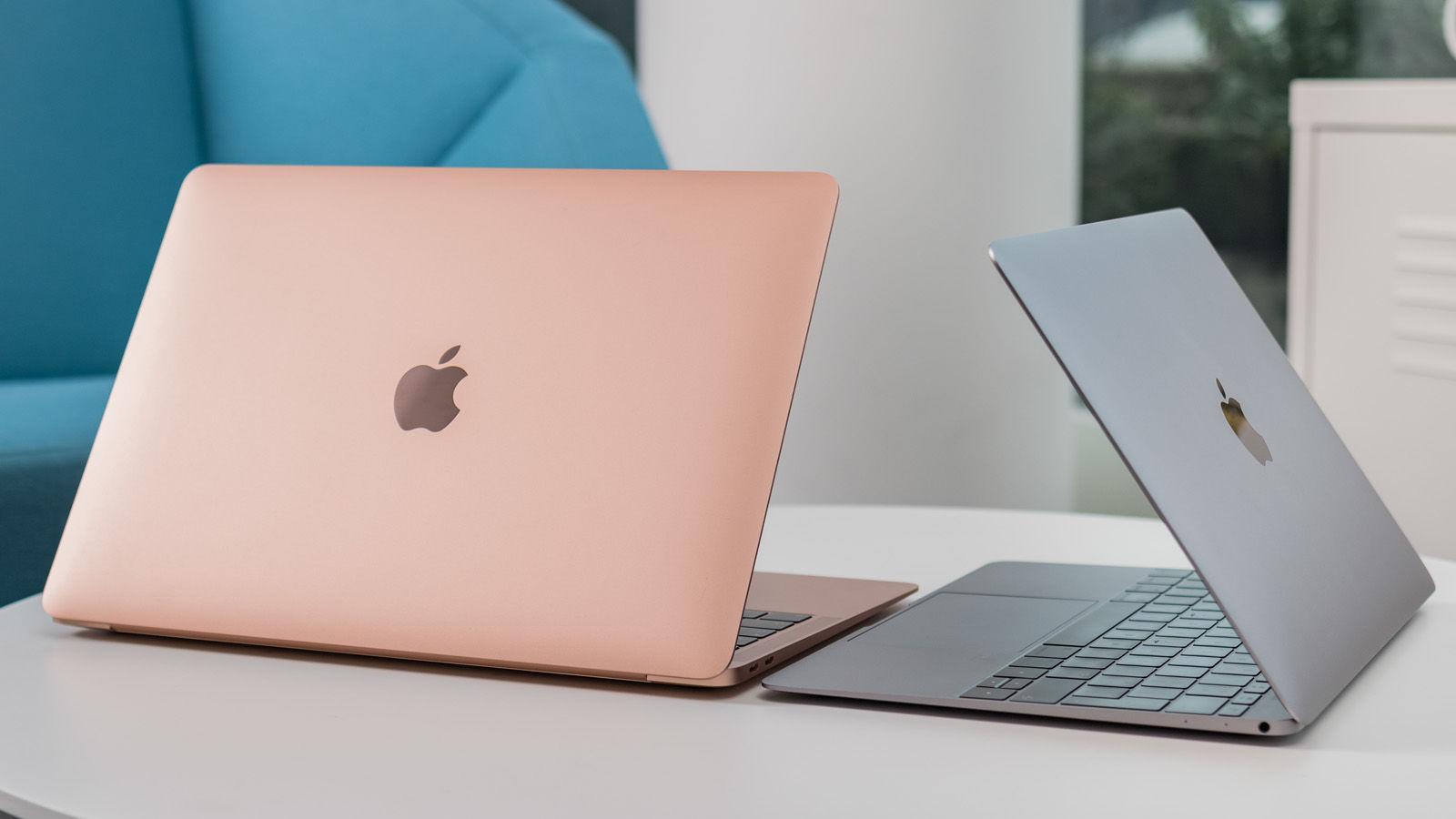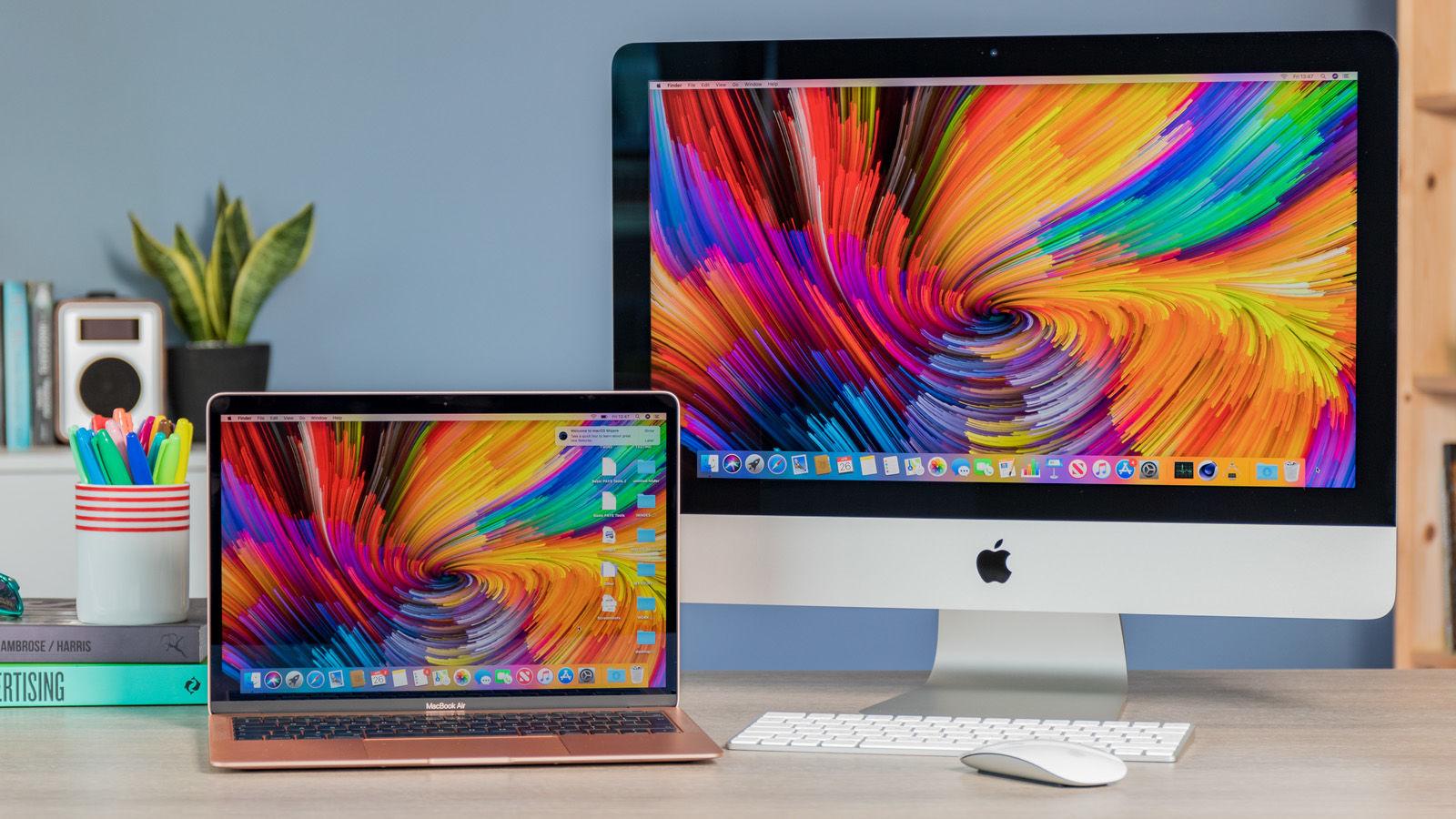If you’re choosing between two different types of Mac, or two generations of the same Mac, you may be wondering just how much of a difference the processor will make.
Since November 2020 all new Mac have featured one of Apple’s own system-on-chip based on the ARM architecture and sometimes referred to as Apple Silicon. A number of Apple chips have joined the line up including the M1, M1 Pro, M1 Max, M1 Ultra, M2, M2 Pro and M2 Max so far. The only Mac yet to move from Intel to Apple Silicon is the Mac Pro.
Mac Pro aside, it has been a while since Apple sold any new Macs powered by an Intel chip, but since some stockists are still selling Intel-powered Macs and it is possible to buy refurbished Macs with Intel chips, the comparison of Intel vs M1 or M2 is still valid. Those wishing to upgrade from an Intel powered Mac to an M1 or M2-series Mac may also be curious about how much of a difference to expect.
With such variety on offer, there is also a question of which Apple processor is best – or at least sufficient for your needs. The M2 represents the second generation of Apple Silicon, but the M2 is still less powerful than the M1 Pro, for example (see: M2 vs M1 Pro, Max, and Ultra).
Here we will compare all the Mac and MacBook CPUs, GPUs, and other specs, such as RAM, to demonstrate how the M1 and M2-series chips compare to each other and to their Intel predecessors.
For more help choosing which Mac to buy read our buying guides where we assess the Best Mac and Best MacBook.
At a glance: M1 vs M2 vs Intel
M1 to M2 Max timeline
November 2020: Apple introduced its first Mac system-on-chip – the M1. It featured in the MacBook Air, 13-inch MacBook Pro and Mac mini.
April 2021: Apple launched an iMac with a M1 chip.
October 2021: The M1 formed the bases for powerful variants, the M1 Pro and M1 Max that arrived in the 14- and 16-inch MacBook Pro in October 2021.
March 2022: The final M1-series chip, the M1 Ultra, arrived with the Mac Studio in March 2022.
June 2022: The next generation of Apple Silicon arrived in June 2022 with the introduction of the M2 chip.
January 2023: The M2 Pro and M2 Max arrived in the 14- and 16-inch MacBook Pro. The Mac mini gained an M2 and M2 Pro chip.
We are currently awaiting the arrival of the M2 Ultra, which is tipped to have a place in the Mac Pro, which could launch in June 2023.
The M3 series isn’t likely to make an appearance until early 2024, although a late 2023 arrival is possible.
Which processor should you choose for your Mac and does it really matter? Read on to find out.
Mac and MacBook processors compared

The processor inside a Mac makes a big difference to how powerful the Mac is. However, it can actually be quite confusing if you aren’t familiar with the terminology. The processor is sometimes referred to as the CPU (central processing unit), which is different to the GPU (graphics processing unit). Sometimes people will refer to the processor when they actually mean the SOC (system on chip) that contains both the CPU and GPU. You may even hear it referred to as a SiP (system in package).
We often refer to Apple Silicon as chips because they are system on chips that combine the CPU and GPU (and for that matter RAM, which Apple refers to as Unified Memory). The various M-series chips offer a variety of CPU and GPU cores.
Similarly there are a number of different Intel chips which combine a number of CPU cores with integrated or discrete graphics options, all of which we will discuss below.
Mac processors from Apple
M1
In June 2020 Apple announced that it would transition Mac from Intel to its “world-class custom silicon.” This process began with Apple’s M1 processor, which was introduced in November 2020.
The M1 features inside these Macs:
The M1 specs are as follows:
- 8-core CPU
- 4 performance cores
- 4 efficiency cores
- 7- or 8-core graphics processor (GPU)
- 16-core Neural Engine
- 8GB or 16GB of RAM
- 68.25GBps memory bandwidth
The M1 was Apple’s first chip designed by Apple specifically for the Mac and it made shockwaves in the industry with giant leaps in performance. However, some people criticised the RAM limitations, with the new Macs only able to support up to 16GB Unified Memory.
M1 Pro
Apple introduced the M1 Pro in October 2021.
The M1 Pro features in these Macs:
- 14-inch MacBook Pro (2021)
- 16-inch MacBook Pro (2021)
The M1 Pro specs are as follows:
- 8- or 10-core CPU
- 6 or 8 performance cores
- 2 efficiency cores
- 14- or 16-core GPU
- 16-core Neural Engine
- 16GB or 32GB of RAM
- 200GBps memory bandwidth
The M1 Pro offers a 14-core GPU or a 16-core GPU. At launch Apple claimed the GPU in the M1 Pro to be 2x faster than the M1. Apple also claimed that the GPU was up to 7x faster than the integrated graphics on the latest 8-core PC laptop chip.
The M1 Pro also added a ProRes accelerator in the media engine to speed up video processing. Apple claimed that the M1 Pro could deliver up to 200GB/s of memory bandwidth, which is nearly 3x the bandwidth of M1.
The M1 Pro supports up to 32GB RAM (compared to a maximum of 16GB for the M1).
M1 Max
The M1 Max was also introduced in October 2021 as a standard option for the 16in MacBook Pro, and a build-to-order option for the 14in MacBook Pro. Then in March 2022 the M1 Max became one of the options for the Mac Studio.
The M1 Max features in these Macs:
The M1 Max specs are as follows:
- 10-core CPU
- 8 performance cores
- 2 efficiency cores
- 24- or 32-core GPU
- 16-core Neural Engine
- 32GB or 64GB of RAM
- 400GBps memory bandwidth
The M1 Max has the same 10-core CPU as the M1 Pro, but everything else is significantly enhanced. The GPU is probably the most important difference between the M1 Pro and M1 Max. The M1 Max GPU goes all the way up to 32-cores (there is also a build-to-order 24-core option.)
At launch Apple claimed the graphics performance of the 32GB GPU to be up to 4x faster than the M1.
M1 Max also has two ProRes accelerators that help it deliver up to 2x faster video encoding than M1 Pro. Apple claimed the M1 Max powered MacBook Pros can edit up to 30 streams of 4K ProRes video or up to seven streams of 8K ProRes video in Final Cut Pro. That’s more streams than on a 28-core Mac Pro with Afterburner.
At launch Apple stated that the performance of the M1 Max is “similar to that of the highest-end GPU in the largest PC laptops while using up to 100 watts less power.”
M1 Max also offers up to 400GB/s of memory bandwidth. That is 2x that of M1 Pro and nearly 6x that of M1. As a result a maximum of 64GB RAM is possible with the Max.
M1 Ultra
The M1 Ultra was also introduced in March 2022 as an option for the Mac Studio.
The M1 Ultra features in these Macs:
The M1 Ultra specs are as follows:
- 20-core CPU
- 16 performance cores
- 4 efficiency cores
- 48- or 64-core GPU
- 32-core Neural Engine
- 64GB or 128GB of RAM
- 800GBps memory bandwidth
The M1 Ultra is essentially two M1 Mac chips, so it can offer a 20-core CPU and up to 64-core GPU. Apple achieves this using UltraFusion architecture to connect the two M1 Max chips to avoid trade-offs such as increased latency, reduced bandwidth, and increased power consumption. Apple also explained that the M1 Ultra behaves like, and is recognised by software, as one chip.
At launch Apple claimed to offer “4x the bandwidth of the leading multi-chip interconnect technology” and that the m1 Ultra “delivers 90 percent higher multi-threaded performance than the fastest available 16-core PC desktop chip in the same power envelope.”
Apple also claimed that the 64-core GPU delivers faster performance than the highest-end PC GPU available – all while using 200 fewer watts of power.
The M1 Ultra can be configured with up to 128GB unified memory – according to Apple the most powerful PC graphics cards max out at 48GB. The M1 Ultra also offers twice the media engine capabilities of the M1 Max, for accelerated video encoding and decoding.
M2
The M2 was introduced in June 2022 with the MacBook Air and 13-inch MacBook Pro. Apple later added the M2 as an option for the Mac mini.
The M2 features in these Macs:
The M2 specs are as follows:
- 8-core CPU
- 4 performance cores
- 4 efficiency cores
- 8- or 10-core GPU
- 16-core Neural Engine
- 8GB, 16GB or 24GB of RAM
- 100GBps memory bandwidth
At launch Apple claimed: “Compared with the latest 10-core PC laptop chip, the CPU in M2 provides nearly twice the performance at the same power level.” Apple also stated that the “M2 provides nearly 90 percent of the peak performance of the 12-core chip while using just one-fourth the power.”
Apple also claimed the 10-core GPU delivers “up to 25 percent higher graphics performance than M1 at the same power level”, thanks to the larger cache and higher memory bandwidth. At maximum power this is 35 percent better, claimed Apple.
Thanks to the additional GPU cores, 10-cores rather than the 8-core limit of the M1, the M2 performs better than the M1, but it’s still below the M1 Pro with 14-cores.
M2 Pro
The M2 Pro was introduced in January 2023 with the 14- and 16-inch MacBook Pro and the M2 Pro Mac mini.
The M2 Pro features in these Macs:
The M2 Pro specs are as follows:
- 10-core or 12-core CPU
- 6 or 8 performance cores
- 2 efficiency core
- 14- or 16-core GPU
- 16-core Neural Engine
- 16GB or 32GB of RAM
- 200GBps memory bandwidth
Like the M1 Pro, the M2 Pro has a built-in media engine that accelerates H.264, HEVC, and ProRes video encoding and decoding. Better power efficiency during playback of multiple streams of 4K and 8K ProRes video can also be expected.
At launch Apple claimed that the M2 Pro is 40 percent faster in Adobe Photoshop image processing, and 25 percent faster in Xcode code compiling when compared to the M1 Pro.
Apple claimed that, when compared to the Core i9 16-inch MacBook Pro, the M2 Pro is 2.5 times faster in Photoshop and 80 percent faster in Xcode.
M2 Max
The M2 Max was also introduced in January 2023 with the 14- and 16-inch MacBook Pro.
The M2 Max features in these Macs:
The M2 Max specs are as follows:
- 12-core CPU
- 8 performance cores
- 4 efficiency core
- 30- or 38-core GPU
- 16-core Neural Engine
- 32GB, 64GB or 96GB of RAM
- 400GBps memory bandwidth
Like the M1 Max, the M2 Max offers two video-encode engines and ProRes engines. At launch Apple claimed the M2 Max would see a 30 percent improvement over the M1 Max when using color grading in DaVinci Resolve, while it would be 2 times faster than the Intel Core i9 MacBook Pro in the same test.
For effects rendering in Cinema 4D, Apple claimed that the M2 Max is 30 percent faster than the M1 Max, and 6 times faster than the Core i9 MacBook Pro.
M2 Ultra
Yet to launch.
Expected release: June 2023.
Expected spec:
- 24-core CPU
- 16 performance cores
- 8 efficiency core
- 60- or 76-core GPU
- 32-core Neural Engine
- 64GB, 96GB, 128GB or 192GB of RAM
- 800GBps memory bandwidth
M3
Yet to launch.
Expected release: 2024.
Expected spec:
- 12-core CPU
- 6 performance cores
- 6 efficiency cores
- 10- or 12-core GPU
- 16-core Neural Engine
- 8GB, 16GB or 24GB of RAM
- 100GBps memory bandwidth
M3 Pro
Yet to launch.
Expected release: 2024.
Expected spec:
- 12-core CPU
- 6 performance cores
- 6 efficiency cores
- 16- or 18-core GPU
- 16-core Neural Engine
- 16-core Neural Engine
- 16GB or 36GB of RAM
- 200GBps memory bandwidth
Mac processors made by Intel

Apple has used various generations of Intel processor over the years. Here are details of some of the Intel chips you may find inside any Macs that predate Apple’s move to the M1 and beyond.
The only Macs Apple currently sells with Intel processors include:
If you are considering buying a Intel-powered Mac second hand we would recommend that you don’t! Read Should I buy a second hand Mac?
Back when Macs were powered by Intel, Apple specified an Intel processor generation for each Mac in its marketing materials. So you would have seen a description such as 2.0GHz quad-core 10th-generation Intel Core i5 processor associated with a particular Mac.
However, without those marketing materials is isn’t so easy to find out which processor is inside an Intel-powered Mac because the About This Mac information shows the year that Mac went on sale and the processor specifics such as GHz and number of cores, but not the processor generation. Identifying the processor generation can be useful in comparing different Macs – and PCs.
If you want to find out the specs of your Intel Mac we suggest you read our guide to how to check the specs of your Mac.
Here’s how the Intel processor line up has looked since around 2011:
- 1st Generation – Nehalem (2011)
- 2nd Generation – Sandy Bridge (2011)
- 3rd Generation – Ivy Bridge (2012)
- 4th Generation – Haswell (2013)
- 5th Generation – Broadwell (2015)
- 6th Generation – Skylake (2015)
- 7th Generation – Kaby Lake (2017)
- 8th Generation – Coffee Lake (2018)
- 9th Generation – Coffee Lake Refresh (2018)
- 10th Generation – Ice Lake (2019)
M1 vs Intel

The Intel processors that Apple used in its Macs since 2006 were x86 chips. The Apple Silicon is based on ARM, but include a number of Apple technologies (so they aren’t ARM chips, strictly speaking). ARM and x86 are completely different architectures-which means that they need different code, and hence the operating systems and software needs to be tailored to them.
Therefore one of the main concerns with the move to M1 (or any variant) could be whether required software is compatible with ARM. Apple addressed this with Rosetta 2, which translates the code from x86 to ARM and, with a few exceptions, there was no issue with software written for x86 running on the M1 Macs. Many software developers were quick to update their software to run on M-series Macs, though.
One advantage of ARM over Intel’s X86 is power consumption, this is evident in the long battery life of the M-series Macs. The 16-inch MacBook Pro has the longest even battery life for a Mac at 22 hours. The 2019 Intel-powered 16-inch MacBook Pro could only manage 11 hours.
There are other ways in which the M-series chips are more efficient than Intel processors. Macs with Apple chips have two kinds of processor cores: high-performance and efficiency. Having two types of cores ensures that background processes don’t slow down the computer because there is always enough power available for programs to run. For example, even the fastest Intel-powered Mac might have experienced slowdowns and performance drops if a system process like iCloud, or the indexing of Photos or Spotlight, was running in the background.
This is all great in theory, but in practice benchmarks prove that there is a leap in performance from Intel to M1, and beyond. Our benchmarks below include the best Intel MacBook Pro for comparison.
Mac Processor Benchmarks
When we tested we found that even Apple’s M1 chips delivered performance that was equal to, or even better, than the most powerful Intel laptop chips found in Macs at the time – and the M1 Macs weren’t even targeted at the kind of people who need the most powerful laptops. The M1 really was better than a comparable Intel chip – just as Apple claimed.
The M1 Ultra in the Mac Studio is still the most powerful Apple-made chip, but that will be overkill for the majority, and it does have a high price, but benchmarks have shown that it beats the Mac Pro with the best graphics card option, suggesting that Apple knows exactly what it is doing with its CPUs and GPUs. We await the new Mac Pro, which will probably feature the M2 Ultra with anticipation.
There is no reason to avoid buying an M1, M1 Pro, M1 Max or M1 Ultra over an Intel-powered Mac, especially now that Apple Silicon is so well established.
How to choose a Mac processor
Whether you are comparing two Macs with Apple chips, or one Apple chip and one Intel chip, or even two Intel chips, this is what to consider:
How many CPU cores?
You will notice that Apple’s M1 has eight CPU cores, the M1 Pro and M1 Max have ten CPU cores, and the M1 Ultra has 20 CPU cores.
The M2 series extends that, with the M2 CPU having 10 or 12 CPU cores and the M2 Pro and M2 Max having a 12 core CPU.
Among the Intel Macs you would generally find dual-core, quad-core, 6-core, 8-core and 10-core CPUs, while the Mac Pro offers a Xeon processor with 8, 12, 16, 24, or 28-cores.
Having more cores available means that your Mac will be able to run multiple processes at once. Apple’s M-series Macs have two kinds of cores: high performance and high efficiency cores. The difference between high performance and efficiency cores is that the efficiency cores are power saving while the performance cores can be used for more demanding tasks. So while the performance cores focus on demanding tasks there won’t be a hit on power efficient processing, both can happen in tandem.
How much CPU Cache?
The more processor cache you have the better. Cache is on-board memory and it helps the processor deal with repetitive tasks faster, because information can be held in the memory. Greater amounts of cache will also help with multitasking, because several tasks can be run simultaneously.
How many GPU cores?
This is more apparent on the M-series Macs because Apple highlights the number of GPU cores and this extends as you move up the range.
Apple’s M1 has 7 or 8 GPU cores, the M1 Pro had a 14-core or 16-core GPU, the M1 Max had a 24-core or 32-core GPU, and the M1 Ultra has a 48-core or 64-core GPU.
The M2 series extends that, with the M2 GPU having 8 or 10 GPU cores and the M2 Pro having 14 or 16 GPU cores, and M2 Max having a 30-core or 38-core GPU.
Intel Macs either had integrated graphics or a discrete graphics card. The discrete option was more for professionals who were using graphics intensive programmes on their Macs. A discrete graphics card has its own memory, while integrated graphics shared memory with the processor.
There were concerns when Apple introduced the M-series chips because the graphics are integrated on the system on chip, but there are benefits to this. Because the M-series Macs integrate the GPU, the CPU the RAM onto the same system on chip (SoC) the GPU and CPU can exchange information quickly and the RAM can be shared efficiently – Apple refers to its Unified Memory Architecture which makes this possible.
As you can see from the chart above, even the Pro, Max and Ultra variants of the M1 topped the best graphics options in the Intel-powered Macs.
How many GHz?
GHz reflects the number of clock cycles per second. So a 2.3GHz processor’s internal clock beats 2.3 billion times per second. Hence people referring to the number of GHz as the clock speed.
You’ll notice that it’s not that easy to compare the M1 with an Intel processor because while Intel lists GHz Apple doesn’t. However you can find out the maximum clock speed of the M1-series Macs. The M1 is known to be clocked at 3.2GHz, for example.
Each range of Intel-equipped Macs usually has more than one option in terms of GHz. Sometimes it will look like a more powerful Mac has a slower clock speed. This is invariably due to the Mac in question having more cores available. For example, the 3.1GHz 6-Core iMac costs considerably more than the 3.6GHz Quad-Core model. At first glance that might look like a bad deal, but that’s six 3.1GHz cores, rather than four 3.6GHz cores. And the more cores the better.

What is Turbo Boost?
There is no Turbo Boost figure to consider with Apple’s M1-series, but is a significant part of Intel’s marketing so we will discuss it here.
The simplest way to think of Turbo Boost is as a way of safely over-clocking the cores on a processor. This figure can sometimes give a clue as to how one generation’s processor compares to the next.
The Turbo Boost controller samples the power consumption and temperature of the cores hundreds of times a second while monitoring the demands made of them by software. If any of the cores are being driven to their theoretical maximum, Turbo Boost can, if enough power is available and the temperature is at a safe level ‘over-clock’ the core and enable it to work faster.
So the eight cores in a MacBook Pro’s 2.3GHz 8-Core i9 processor can, if needed, be pushed to 4.8GHz subject to power consumption and heat dissipation.
Not all processors can Turbo Boost. The i3 processors, found in the 3.6GHz Quad-Core iMac do not include Turbo Boost, so the 3.6GHz speed is never going to be over-clocked.
Why would you need Turbo Boost? Turbo Boost kicks in when you aren’t using all the cores, so the clock speed can be increased on the cores that are in use. So, Turbo Boost is a feature that will benefit you most if you aren’t using applications that use multiple cores.
Why you might not want Turbo Boost? When Turbo Boost is in use your computer will be using more power, so if you have a laptop it might not be in your interest to have Turbo Boost.

Intel processor types
It’s not only processor generation you need to consider with Intel. There was a lot of variety in terms of processor speed, number of cores, Turbo Boost figures and whether it is an i3 or an i9. Wondering if i5 is better than i7, or if i3 is going to be inadequate? We look through the different processors right up to i9 below.
Core M – The M is a mobile versions of Intel’s chips – it appeared in the first Retina MacBook when it launched in 2014. There were three M processors with increasing performance: m3, m5 and m7.
Core i3 – i3 processors featured in some Macs. They don’t feature Turbo Boost.
Core i5 – The majority of Macs used to use Intel’s i5 processors. The i5 tended to be quad-core or 6-core. If you find a dual-core it’s an older generation.
Core i7 – The i7 is worth looking out for if you are thinking of purchasing an older Mac because, in older generations of Macs, when it came to quad-core the i5 and i7 versions were not equal. The quad-core i7, which was once used in the 15in MacBook Pro offered some features that the quad-core i5 didn’t, one of which was Hyper threading. Another difference was the size of the cache. Thanks to these features, i7 processors were better for multitasking, multimedia, high-end gaming, and scientific work.
Core i9 – Intel’s i9 processors arrived with the 9th generation Coffee Lake refresh, and have up to 8-cores.
Xeon – Intel’s Xeon processors are workstation or server processors. Xeon processors support more memory than the i5/i7/i9 processors.
Hyper threading
Hyper threading allows the processor to handle twice as many ‘streams’ as it has cores, by fooling software into thinking it has twice as many cores. So a quad-core processor with hyper threading should be able to execute four times as many sets of instructions in a given time period as a dual-core processor with the same clock speed but without hyper threading.
This means that a quad-core i7, for example, can act like it has eight cores, but a quad-core i5 will only be able to use the four cores available to it.
Which Mac Processor to choose?
Now that Apple has almost completed its transition from Intel to Apple Silicon, with only the Mac Pro yet to transition, the question of which processor is no longer a choice between Intel and Apple. We have in the past recommended waiting for a second generation product, but now that the M2 series is established there is no reason to wait. If you need a powerful Mac go ahead and buy one. The only reason to delay would be if you want to wait for the M3, which could arrive in early 2024.
And for the best deals right now check out our:












